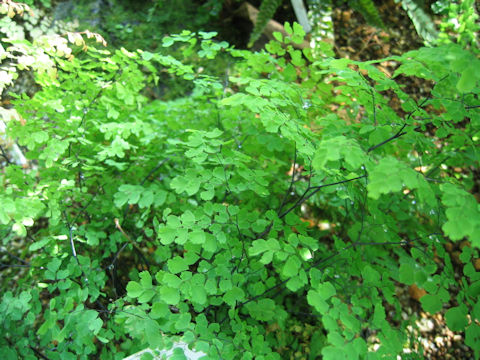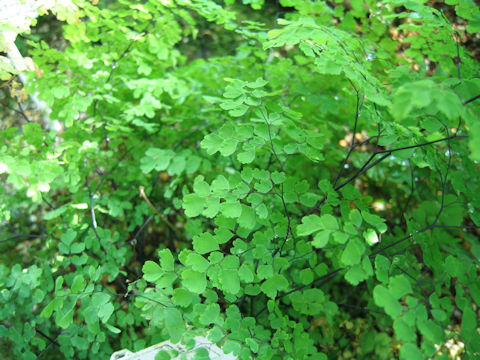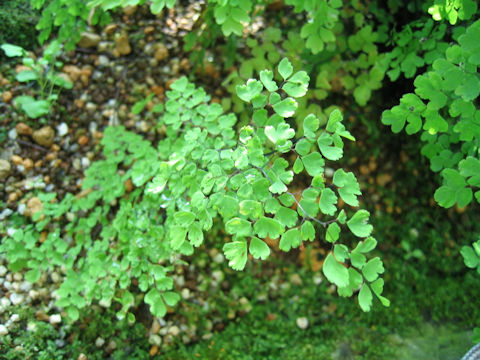 |






|

|
íªÌ¬}´ÌÆêAZÌÅLíÅ·B
ªðÜñ¾Rɶ¦A³ÍPO`QTZ`ÉÈèÜ·BtÍQñHóɪòµÜ·B¬HÐÍî`ÅAÍQ`RóôµÜ·BeôÐÌæ[ͳF¼§¾ÅO¤Éª«ÝA»ÌÉ\[XiEqXjðø«Ü·B
|

|
zECV_ÈzECV_®ÌíÎV_A¨ÅAw¼Í Adiantum ogasawarenseBp¼Í èܹñB
|

|
The "Iwa-hourai-shida" (Adiantum ogasawarense) belongs to the family Parkeriaceae. It is an evergreen fern that is endemic to Chichijima, Hahajima, and Anijima in the Ogasawara Islands in Japan. It grows on moist cliffs and is 10-25 cm tall. The leaves are twice pinnately branched. The lobes are fan-shaped with 2-3 shallow lobes at the margins. The tips of each lobes are colorless and translucent and curl outward, holding a sorus (sporangium) within them.
|

|
¤m§¼Ã®sçíæuRA¨vÉÄA2004N0110úBeB
|




